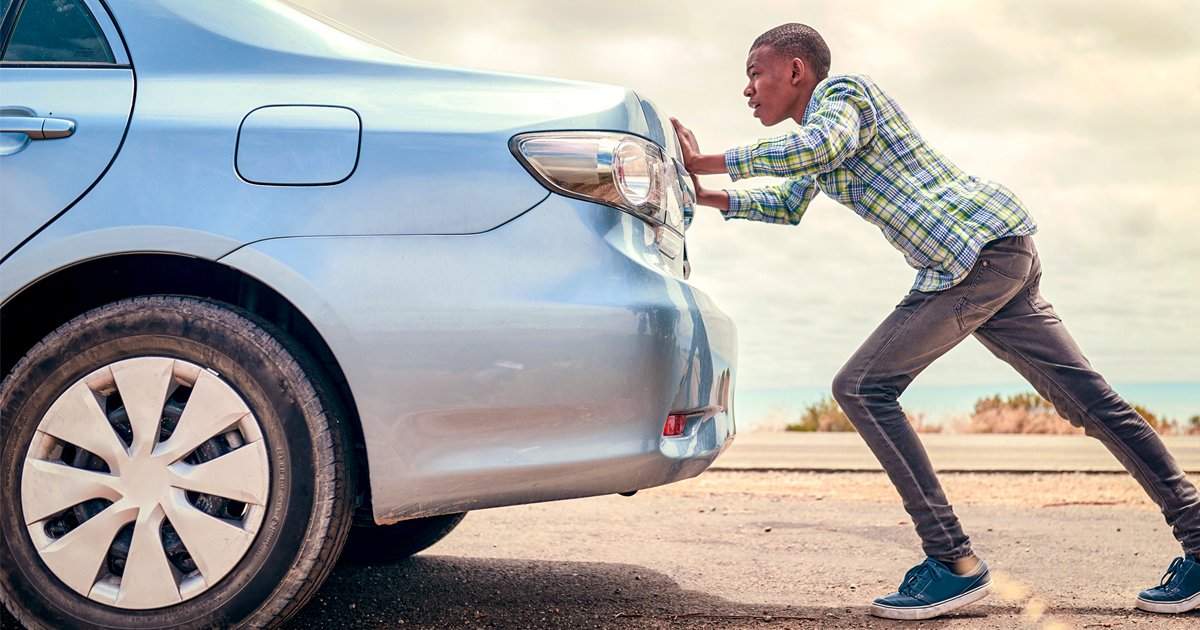
7 Ways to Cover Your Assets: How to Start an Emergency Fund
We need to face an adulting truth: emergencies happen. Emergency funds on the ready could help relieve some stress during financial chaos. According to Pew Research, if faced with an unforeseeable disaster like job loss or illness, only 47% of U.S. adults have the money to cover bills for three months.1 No one wants to get caught under a pile of bills, so preparing in advance is worth the trouble. Read on for workable steps to start your emergency fund and maneuver your way through life’s unescapable bumps.
There are Options
Before we dive into the ins and outs of preparation by building an emergency fund, let’s talk about the here and now. Some emergencies can’t wait, and if you’re reading this there’s a chance, you’re on the hunt for a solution you can use right now, not six to twelve months in the future. Once your current situation has been handled, building up funds for next time is ideal. For now, if you’re looking for a way to cover an unexpected expense as soon as possible, Speedy Cash offers loan options that could be a solution. Depending on your state of residence we offer Payday Loans, Title Loans, Installment Loans, and Lines of Credit that may be a solution to your current situation. Apply online, over the phone, or in-store today and you can receive funding as soon as the same day.
An emergency fund defined
An emergency fund is a separate account kept as a future safety net for unexpected expenses. This dedicated savings is set up so you don’t have to rely on credit cards or a loan to be able to take care of business, and so you don’t get caught in a debt storm. The Consumer Financial Protection Bureau reports even minor monetary emergencies could set a person back from financial security, and if the situation snowballs into debt it could have lasting results.2
What’s considered an emergency?
The following examples give you an idea of what kind of emergency warrants withdrawals from your emergency fund. Set rules for yourself about what constitutes an emergency so you’re not unnecessarily dipping into the account. It isn’t for money grazing.
Emergencies
These helpful examples give an idea about when to use your emergency reserves.
- You accidentally rear-end someone else’s car, and you need help paying the insurance deductible.
- Your washer breaks and leaves a soapy mess in your laundry room.
- You get sick and can’t pay your bills.
- You lose your job and need help paying rent.
- Your house gets hit by a massive hailstorm and you need a new roof.
- You break your arm from a fall…when you were checking out the roof damage…and now you can’t work.
Not emergencies
These examples showcase when you should not borrow from your emergency funds.
- You have to have the latest Apple products.
- You fall short on the cable bill.
- You have too little in your fun fund for drinks with friends.
- You want to buy an expensive gift for someone.
- You want to go on vacation.
- The basics like groceries, gas or clothes.
Emergency fund benefits
Just like retirement and personal savings accounts, an emergency fund is important because it creates some monetary security. A Bankrate survey shows only 40% of U.S. adults would be able to cover a $1,000 unexpected cost like an ER visit or repair bill. And 28% said in the last twelve months, they or a close family member had a crucial unforeseen expense.3 Yikes! If you have kids, that could be a fall from a bike and a broken arm or even a fender bender! But there’s no need to put extra pressure on yourself. Remember, we’re building here. This account doesn’t have to accumulate all at once.
- An emergency fund is not another stressor; it’s supposed to be a stress reliever.
- Having a back-up account can give you peace of mind so you can focus on fixing the problems at hand, without worrying about how you’re going to pay for it.
- With an established reserve you could help stave off future debt problems due to emergency costs.
- You can start with just a small amount at first and build over time.
Step 1: Determine how much you need
Most financial experts suggest saving between three to six months of living expenses in your emergency fund. It would be optimal for you to have enough money to smoothly manage your household bills (like rent, food, utilities, health care, etc.) for at least three months.4 Keep in mind, this is a journey and you can add to your emergency fund weekly, monthly or whatever schedule that works best for you.
Step 2: Look at your budget
Yep, I said the B word. If you need help building your budget, don’t be afraid of doing a little research. Once you know your expenses and how your money is coming and going, you can figure out how much to send into your separate emergency account.
- Calculate your monthly income.
- Figure out your monthly bills.
- Subtract your bills from your income.
- How much can you put aside into your emergency savings? Even $10 is a start!
Step 3: Where to keep your emergency fund
After you’ve figured out how much and when you want to start saving you need to keep the money in a safe place. It’s best to have the funds accessible so you can use them quickly if you have an unexpected disaster. FDIC insured money markets or high-yielding savings accounts are good options for an emergency savings account.5 Look for the following features in an account:
- No lock in for funds.
- No charge for withdrawals.
- No risk.
- Higher interest rate.
Step 4: Available funds shouldn’t be a temptation
To ensure that your funds are strictly for emergencies, keep them in an account that you won’t be tempted to access.
- Try a savings account at a separate bank from the rest of your accounts.
- If all your accounts are at the same bank, keep account numbers and info in separate safe places so as not to mix them up.
Step 5: Build your funds
A good rule of thumb is to put money into savings when you get paid. But if this timeline doesn’t work for you, try a different date or put aside a certain percentage of your pay each month.
- Create a reminder for yourself to manually make emergency fund deposits.
- Set up an automatic withdrawal from your checking into the emergency fund savings.
- Ask your employer if they can direct deposit some portion of your paycheck to a checking account and some to your emergency fund account, so you’re not tempted to skip a month.
Step 6: Continue to save until you hit your goal
Your goal is the number you settled on at the beginning of this process. Keeping this number in mind can help you feel motivated to save.
- Keep putting aside money and making deposits to build up your emergency fund.
- And when you hit that goal, put those funds toward other financial goals such as retirement, building credit, saving for college or preparing for home ownership.
Step 7: I had an emergency! Now what?
If that unexpected catastrophe does happen and you use your emergency funds, follow the guidelines starting at “Step 1” to begin saving again and replenish your account.
Save for the future you want
Starting an emergency fund can feel intimidating and overwhelming, but large unexpected costs with no resources could be worse. You can start building up savings slowly with a good plan of action. Figure out a reasonable amount as your goal, find where you can save, deposit funds in an accessible, interest yielding account, and make those deposits a habit. Once you set this financial goal and stick with it, your savings will grow, and you’ll be one step closer to financial security!
Sources:
1 Parker, K., Horowitz, J. M., Brown, A. (2020, April 21). About Half of Lower-Income Americans Report Household Job or Wage Loss Due to COVID-19. Retrieved from Pew Research Center: https://www.pewsocialtrends.org/2020/04/21/about-half-of-lower-income-americans-report-household-job-or-wage-loss-due-to-covid-19/
2 Staff. (n.d.). An essential guide to building an emergency fund. Retrieved from Consumer Financial Protection Bureau: https://www.consumerfinance.gov/start-small-save-up/start-saving/an-essential-guide-to-building-an-emergency-fund/
3 Dixon, A. (2020, January 22). Survey: Nearly 4 in 10 Americans would borrow money to cover a $1K emergency. Retrieved from Bankrate: https://www.bankrate.com/banking/savings/financial-security-january-2020/
4 Staff. (n.d). What’s the Right Emergency Fund Amount? Retrieved from Vanguard: https://investor.vanguard.com/emergency-fund/amount
5 Shell, A. (2020, April 10). Here are three accounts you need to manage your money and give yourself financial security. Retrieved from USA Today: https://www.usatoday.com/story/money/personalfinance/2020/04/10/savings-accounts-checking-retirement-3-essential-places-for-money/5115654002/



